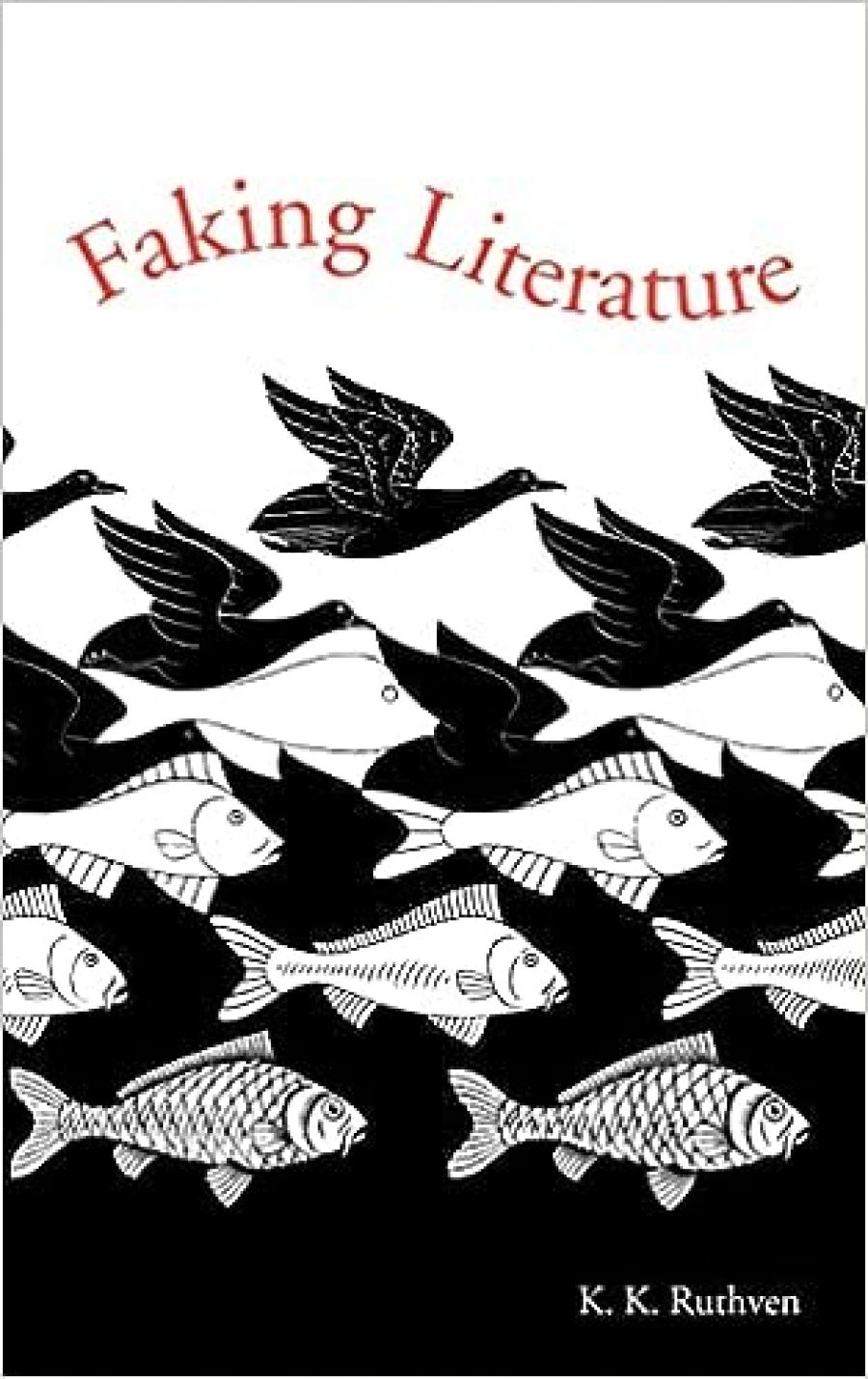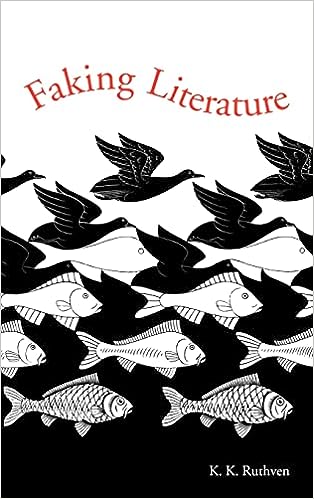
- Free Article: No
- Contents Category: Literary Studies
- Review Article: Yes
- Article Title: The Gospel Truth
- Online Only: No
- Custom Highlight Text:
Nothing divides people as much as the idea that history is a text and, in many cases, a fiction. It’s the sort of notion – more or less accepted by academics in the Humanities – that really annoys ‘among the barbarians’ public intellectuals. Point out that history is written by the victors, that much of what we think of as gospel was written decades after the event from secondary sources (the Gospels, for example), and that the bulk of tradition, from Scots tartan to Christmas, is a nineteenth-century confection, and their anger becomes tinged with panic. It’s vertigo, but one of time rather than space – the sudden realisation that you are standing on nothing but the present, with the texts and living witnesses (whose memories are texts) inhering in the present.
- Book 1 Title: Faking Literature
- Book 1 Biblio: Cambridge University Press, $49.95 pb, 237pp
- Book 1 Cover Small (400 x 600):

- Book 1 Cover (800 x 1200):

As Ken Ruthven demonstrates in Faking Literature, this is far from the case. Famous fakes such as Ern Malley and Thomas Chatterton are merely the most visible examples of the innumerable faux-arts woven into the beaux-arts. The scandal of widespread art forgery is by now accepted – similar coddings up in literature and music are less visible. Doubtless there are still many people listening to Albinoni’s ‘Adagio in G’ and believing it to be a plaintive lament from the heart of the baroque, when in fact it was written by a music professor in the 1940s. They may even be listening to it while reading How Green Was My Valley?, the moving tale of Welsh mining town life written by a non-Welshperson, sitting on period furniture lovingly aged and distressed by the antique dealer.
Ruthven’s book traces the way in which notions of authenticity and forgery are interwoven in the fabric of modernity. It traces the threads back to pre-Romantic celebrations of the primitive and real in eighteenth-century Europe, most famously with the Ossian poems, which seem to have played a not inconsiderable part in the Romantic revolution across Europe. The authenticity effect is the flip side of the signature effect – texts are given their Meaning by the fact that they speak to us from history. There has also been a retroactive individualisation of the authorship of collaborative and patchwork texts (Pericles being a famous example). Ruthven relates these familiar themes of poststructuralism to newer ones of forgery, the material practices of the signature – from Henry VIII’s imprinting plate to the US President’s signature-writing machine, and much more besides. His research is fascinating and impressive – not least the genealogies of staple forgeries such as The Protocol of the Elders of Zion. But its key arguments don’t convince me for a second, and its handling of such facts that I have any equal knowledge of raises questions.
The facts first, several of which seem fudged to get the result desired. The Demidenko affair is figured as a debate between the (pro-Darville) literati and the (anti-Darville) zoon politikon, which hardly squares with the facts: Darville’s defenders included political bruisers such as Paddy McGuinness and her severest critics included literary figures such as Ivor Indyk. The Rahil Khan affair, in which a UK vicar posed as a British-Asian woman and sold a volume of short stories to The Women’s Press, is cited as an example that anyone can get away with anything. In fact, the stories were refereed by a female British-Asian academic who doubted their authenticity – The Women’s Press declined to take her advice. And so on. These examples don’t reassure us about Ruthven’s handling of more obscure matters.
As to the theory, Ruthven argues that ‘literature’ and ‘spuriosity’ are mirror images of each other – tweedledum and tweedledee – and that the former should be read through the latter, that literature is a forgery of itself. Consequently, the anarchic power of imaginative work, whether ‘genuine’ or that of the forger, should be allowed full rein to create the ‘chaosmos’, the realm that is beyond chaos and order.
But that sort of blanket approach gets you into trouble pretty quickly. We can easily rule out faked ‘historical’ documents – unless anyone is going to argue the ludic heteronomy of the Protocol of the Elders of Zion – designed solely to harm others, but what of ‘fakelit’ that seeks to masquerade as coming from marginalised identities? Ruthven marshals numerous examples of the public being fooled by white, usually male, authors posing as Asian women, Aboriginal women, whatever, and notes that they frequently get away with it, at least for a while. But we want to know that we are being honestly presented with the writings of X or Y, not despite the impossibility of a text establishing its own authenticity, but because of that impossibility. No doubt there are all sorts of sleazy, radical-chic agendas in publishing from the margins. Texts from the margins may turn out to be pretty much the same as those from the mainstream, but that’s as interesting a discovery as finding points of genuine difference. Either way, it’s a real encounter. There is an obvious morality of the sub-class of hoaxes known as ‘fakes’ just as there is a morality of the sub-class of hoaxes known as ‘practical jokes’. Getting someone drunk before they have to make a birthday speech is part of the ludic chaosmos, getting them drunk before they drive home is something else entirely. The same goes for fake memoirs of, say, the 1960s, and fake memoirs of, say, the Holocaust. This only fails to be obvious when you make the elementary mistake of much recent English studies and take contemporary critical method as a metaphysics. The very notion of a ‘fake’ takes you hors de texte, and to re-enter later the Borgesian realm where ‘literary for-gery is a sort of spurious literature and so is literature’ smacks of a foregone conclusion, seemingly careful scholarship marred by a commitment to post-structuralist scholasticism.
Indeed, only one major modern hoax gets no substantial treatment – Sokal’s.


Comments powered by CComment